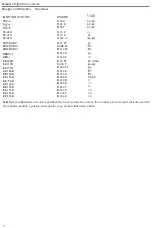
Group
28
Ignition
systems
Des
ign
and
function
-
Overview
Review of electronic
ignition systems
-
II
EZ
-
l02K
was
i
ntrodu
ce
d
in
1984
in conjunction
with the
launch of
the 760 Turbo with
the
823 FT engine and lH 2.1
fuel
injection
system on the American
market.
EZ-102K
is
with a thermostat which transmits a signal to
one
of
the control unit terminals when the engine temperature becomes excessive
.
commanding it
to advance
the
timing
the throWe
i
s
closed.
The f
i
rst EZ
-
K
system
to
be used by Volvo
,
EZ
-
102K remained in production only for a
year before be
i
ng
superseded by more up-to-date variants
according as the new family of engines was
introduced.
EZ-117K
is very similar
to EZ
-
102K
in
configuration,
although designed for the
8230 F
and
8230
FT engines
with the
lH..Jetronic
2.2
fuel
injection system.
The
system
was
introduced
with the new family of engines
in
1985.
The
8230 FT
variant
features a knock-controlled fuel enrichment function
.
its
predecessor
,
EZ
-
102K
,
the turbo engine
variant
i
s
equipped
w
i
th a thermostat which activates a timing advance function to
protect the
engine from over-
heating
.
EZ
-
118K
differs most from the
other systems
the group
.
due to the fact that it depends on a vacuum
connec
tion be-
tween
the
intake
manifold and
control
un
i
t to
supply
engine
load
i
nformation
,
rather
than
on a
load
signal supplied
by an air mass meter via
the
fuel
system control
unit. The
system
also
emp
loys
an idling switch mounted on
the
thr
o
ttl
e
pulley
rather
than a
s
witch
mounted
on
the throttle housing
.
EZ
-
1
18K
was introduced in
1
985 on
the
B
200
E
.
8230 E
and
B
230 K engines.
Tw
o idling compensa
ti
on
functions may be used on
E
Z-1
18K
varian
t
s.
The
82
3
0
K
va
r
iants a
r
e equipped with a temperature
sensor,
while
the
co
ntrol
unit opera
t
es a so
l
enoid valve
which
in
te
rr
upt
s
the
fuel supp
l
y under engine braking conditions.
Most
of
the
differences are a
ttributable
to
th
e
fact
t
ha
t th
e system
used
on carbura
t
ed
engines
(now
with Pierburg
carb
urettor
s)
and on E engines
with the
C
I
system
(
K
-Je
tronicl.
EZ
-
115K
has been designed especially for the 8280 engine. Its
features
two kn
oc
k
sensors (one
for
each
bank
of cylinders), a position
detector for No
.
1
cylinde
r
,
a knock-controlled fuel enrichment
function
and an
induct
ive
speedJposition
pick-up mounted
at
the flywheel. Depending on
the
temperature sensor
t
he control
un
i
t
can
apply tim
i
ng
compensation
by retarding the ignition when the engine is
cold
t
o
achieve
faster
heating of the coolant
.
and
by advancing
when the engine tends to run too hot. The
sys
tem
appeared
in
1987
with
the
in
troduct
ion
of the
8280 engine to replace the
B
28
,
and
is,
therefore
,
used only
on
the 760/780
.
EZ-1
15K
is used in combination
w
i
th
LH-
Jetronic 2
.
2 on both the
E
and F
variants.
EZ-116K
is
a refinement
of other
EZ
-
K
systems.
However
,
it
features advanced self-diagnostics which facilitate fault
tracing and monitoring
.
The
control unit continuously
mon
i
tors the
various sensors
and functions
,
and any faults
present may be d
is
played w
i
th the
aid of a
d
i
agnostic un
i
t
mounted in
the engine
compartment.
EZ
-
116K was
in-
troduced
i
n 1988
on
the
8234F
engine used in
the
7
4
0
GlT
.
Unl
i
ke other EZ-K systems used on
4-cyl
inder
engines in the
700 series,
EZ
-
116K
equipped
with an
induc
t
ive speedJposition
pick-up mounted close to
the
fly-
wheel instead of a Hall generator
in
the distributor
.
The system is used
in combina
ti
on
with the
very
latest fuel
in-
jection system (LH·Je
troni
c
2
.
41
.
Manufa
c
tured
by
8endix
,
the
Rex
-
I
system
is equ
i
pped with the
same
type of diagnostic system as
EZ-116K
.
Used in
conjunction with the Regina fuel
injection system,
Rex-I was
introduced
in 1989 on
8230
F engines sold in
th
e US
A
.
Compensation functions
H
owever, most electronic ignition systems are equipped
w
i
th
addi
ti
ona
l
senso
rs which
enable
th
e con
tr
ol
unit
t
o
ad-
just the
timing to compensate for unusual running conditions. Thus.
sensors (
F-H
)
may
be
regarded
as p
r
oviding
th
e
ignition
system
with
compensa
tion
functions. In
t
he even
t
of engine knock
phenomenon whereby
th
e
fuel
/
air
mixture is ignited by a source other than the
spa
rk
plug), the
kn
ock sensor (FI
moun
t
ed on
the
engine wi
l
l transmit a
signal to the
control unit commanding it
t
o
retard the
igni
t
ion.
Complete closure of
the
throttle
is indica
ted
by a
throt
-
tle
switchlidling switch
(
G). When the
engine is idling.
t
he control
unit regulates
the t
iming
in accordance wi
t
h
an
'i
dling program
'
to
ensure optimum
co
mfort
,
while
the t
iming
under
engine
braking
condi
ti
ons
is controlled to mini-
mize exhaust
emissions.
The
signal supplied
to the
control unit
by the temperature sensorhhermostat
enables
the
un
i
t to
apply
the appropriate t
i
ming
co
mpensat
io
n when the
engine
temperature is unusually h
i
gh or
low.
7










































